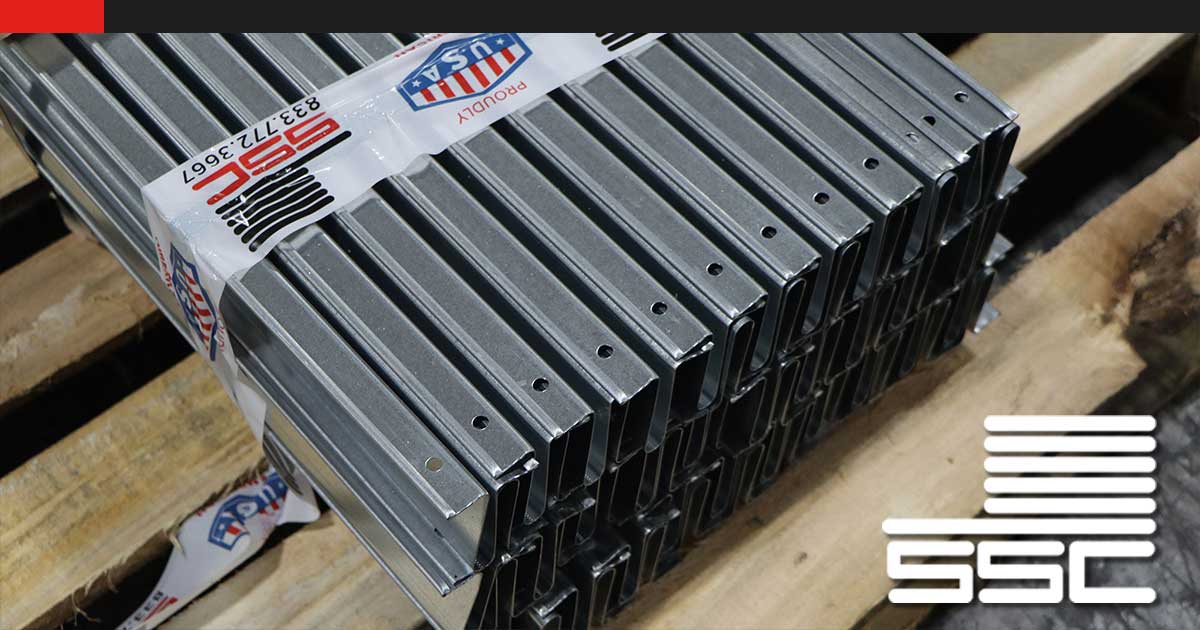Everything You Need to Know About the Ins and Outs of Garage Door Struts

As a trusted industry leader for over 60 years, we know that every component in a garage door system plays a vital role in safety, performance, and longevity – and garage door struts are no exception. While springs often get the spotlight, struts are the unsung heroes that ensure the door sections stay rigid, aligned, and durable under daily use. For garage door business owners and technicians, understanding when, why, and how to use struts can make all the difference in a reliable installation or service call.
We’ll break down what you need to know about garage door struts, from their structural importance to installation tips, so you can continue delivering high-quality, professional service your customers count on.
What are Garage Door Struts and Why are they Important?
Garage door struts are horizontal reinforcement bars, typically made of galvanized steel, that are installed across the back of garage door sections to add strength and rigidity. Their primary purpose is to prevent the door panels from bending, bowing, or flexing during operation. Struts distribute the load evenly across each section, helping to maintain structural integrity and smooth movement over time. They’re also critical for doors in high-wind regions such as Florida, where added resistance is necessary to meet local and state building codes. Struts play a key role in extending the life of the door and ensuring safe, reliable performance.
Key Features of Struts
Garage door struts come in a variety of features designed to meet different performance demands, and understanding their specifications is essential for selecting the right reinforcement. One key factor is the gauge of the steel, which refers to its thickness. Common gauges include 20 and 22 gauge, with lower numbers indicating thicker and stronger steel. Thicker gauges are typically used on heavier doors or in commercial applications where added strength is needed.
Another important metric is KSI (kilo-pound per square inch), which measures the tensile strength of the steel. These features –gauge, KSI rating, and galvanized coating – determine how well the strut can support the door over time and under stress, making them critical specs for techs and installers to understand.
Installation and Maintenance
The number of struts needed depends on the door size and whether it has windows or decorative features. For example, a double garage door may need three struts, while a single door may be sufficiently supported with one or two struts. Areas such as Florida require specific and added struts due to strong winds.
The width of your strut should closely match the width of the garage door. Typically, struts are affixed at the top section of the door but be sure to follow the provided manufacturer’s instructions to ensure your installation aligns with the advised location. If struts are not installed properly, they have the potential to damage the garage door.
Regular maintenance and inspection of garage door struts are essential to ensure long-term performance and safety. Struts should be visually inspected at least twice a year, ideally during routine service calls or seasonal tune-ups. Look for signs of rust, corrosion, bending, or loose fasteners, particularly on older doors or in coastal or humid environments where metal components are more susceptible to deterioration. While struts themselves don’t require lubrication, it’s important to keep the area around them clean and free of debris or buildup that could interfere with door operation. If a strut is damaged, bent, or separating from the door section, it should be replaced promptly to prevent panel sagging or further structural issues. Never try to bend a strut back into place, as this can compromise its integrity; always use a properly sized, undamaged replacement. Keeping struts in good condition not only protects the door but also reduces strain on the opener and other components.
SSC Has You Covered
We offer various strut options to meet your overhead garage door needs, ranging from 20 and 22 gauge, with sizes from 2 1/4” to 3”. Proudly manufactured right here in the U.S.A., our struts are a testament to American manufacturing excellence.
Shop our selection of struts online here.
Related:
Share:
Safety Disclaimer: In order to see all procedures completely, there may be safety measures that are not taken by our actors. Be sure to follow any and all proper safety requirements and refer to your manufacturer’s installation manual for details. Your health and safety is the #1 concern. Failure to understand/follow the recommendations in the course could result in property damage, personal injury or death. While all efforts are made to provide accurate information and guidance, it is impossible to predict all door circumstances. Accordingly, the user agrees that the user of this video; products and information contained herein are at your own risk. In no event shall Service Spring be liable for any property damage, personal injury/death, or any other loss or damage that may result from your use of the information and products provided on this video. All information contained within this site is provided “as-is” without warranty expressed or implied. User assumes all responsibility/risk for use of information and products purchased. If you have any doubts about your ability to perform the work safely, we recommend you contact another door professional to complete your repair.








